Key Takeaways
- Educators and students collaborated in constructing an immersive literary experience at the University of Richmond and then reenacted the narrative as a team.
- Considerable planning goes into such simulations to make them effective collaboration spaces.
- In creating a simulation of Edgar Allan Poe's The Fall of the House of Usher, a team of distributed groups negotiated different approaches to believably embody Poe's characters and period.
- Despite limitations in the software and the planning process during and after a beta test, students experienced Poe's story in a new and rewarding way.
Effective virtual simulations can embed participants in imaginary worlds. Researchers working in virtual worlds and gaming often refer to immersion, a state in which a participant or player loses track of time and becomes one with the simulation.
Immersive settings have been shown to deepen learning. Ken Hudson's work with students training for duty with the Canadian Border Services via a simulation in Second Life revealed that their performance improved 28 percent compared to the group the year before.1 While demonstrating an understanding of a literary work is semantically different from grasping the duties needed at a checkpoint, this article explores what a faculty-student team can do with the dark and richly imagined world of Edgar Allan Poe in an immersive environment. This sample shows what might be achieved:
Poe's The Fall of the House of Usher became the setting for a two-semester pilot project at the University of Richmond. The creators did not intend to design an empirical study to measure the results on student reading or learning; instead, they set out to have a group of volunteer actors and students in two courses test the technical viability of virtual worlds for interactive literary simulation, using materials in the public domain. Follow-on studies could, however, measure outcomes such as:
- Reading comprehension
- Retention of key themes
- Enjoyment of the story among test and control groups
Empirical studies of the effects of contemporary virtual worlds are few: Hudson's aforementioned study, a study of a global team of engineering students, another of a graduate communications class, and one of students studying Mandarin.2
(A glossary of terms appears at the end of this article.)
Background: The Source Text
In Poe's story, an ancient family has come to a desperate end, with Roderick, the last heir, losing his mind while trying to save his sister Madeline, who suffers from "a settled apathy, a gradual wasting away of the person." As the narrator tries to help his friends, a curse seems to thwart his every move, and Madeline is buried alive. Rich with hints of supernatural curses, body-snatching, and incest, the short story is strong stuff if well taught, even for jaded undergraduates. One issue often encountered with this tale and the rest of Poe's work, however, is its determinism: try as they might to do otherwise, the characters end up in a dreadful place. In response, students have often stated, "This is what I'd do instead." We investigated ramifications for learning generated by a simulation that gave students the chance to craft alternate outcomes and thereby test their stratagems. In addition, we encouraged students to create new outcomes that depended on their rereading the original text for clues and ideas that would enhance their understanding of the text.
The setting for such a retelling of Poe needed to entice students used to quality graphics in movies and games, but beyond a well-made set, we found that few special effects were required for a successful 3D simulation online if acting took the place of high-end graphics. Indeed, Richard Bartle found that for virtual worlds to be effective, their content must be both persistent for users and malleable by them. Games often provide one but not both aspects, unless we consider as valid Bartle's claim that "the mere presence of other players can be considered as a form of content."3
Online Antecedents
A number of educators working in virtual environments have experienced the Literature Alive! in Second Life projects. These include The House of Seven Gables, The Archetypal Cavern, and The Spoon River Anthology, as well as a House of Usher simulation that we were unable to locate at the time of writing. (See the Literature in Motion Series for a complete list of active and former projects.) While Literature Alive! provides good research materials and builds of various sites from literature, the developers of University of Richmond's House of Usher wanted to take their work one step further.
Goals for the Project
Our primary goal was to create deeply immersive experiences in which the learner becomes part of the story and, indeed, can craft a shared narrative by collaborating with faculty and other students. Such a role-playing experience "has few counterparts in other medias, method acting perhaps coming close, while for example feeling with the characters in a book or a film is Empathy, feeling from the outside."4
Additional goals included avoiding Poe's dreary outcome and considering what participating in a narrative might do for students accustomed to merely reading one. We found no empirical studies of the use of virtual words in literary studies settings; in fact, simulations that are interactive for literature appear to be rare. Debbie Jeffers, an instructional technologist at the University of Delaware who has spent a great deal of time developing content in Second Life for educators and whose colleagues toured the House of Usher, noted that "while there are tons of science-related builds all over the virtual world grids, great literature sims are few and far between. Your Usher really helped them to see the potential in that area of study."5
When completed, the closest analogue to Usher might have been the Metaverse Shakespeare Company, but for Usher there was no set script, beyond a story arc that the two actors playing Roderick and Madeline decided on. The Usher build, then, was improv theater for the year 1847 and a gateway into the obsessions and genius of Poe and his characters. This article shares several lessons learned during the process of building, testing, and teaching Usher in Second Life.6
Building the Simulation and Orienting Participants
The University of Richmond team, comprising two faculty advisors and builders, a building-and-design consultant, and a student builder, spent over 200 hours during the course of a summer constructing the House of Usher. (Figure 1 shows the floor plan created in SketchUp.) Another three months were devoted to furnishing the house; choosing, developing, and testing interactive objects; and selecting period costumes for the students to choose from.
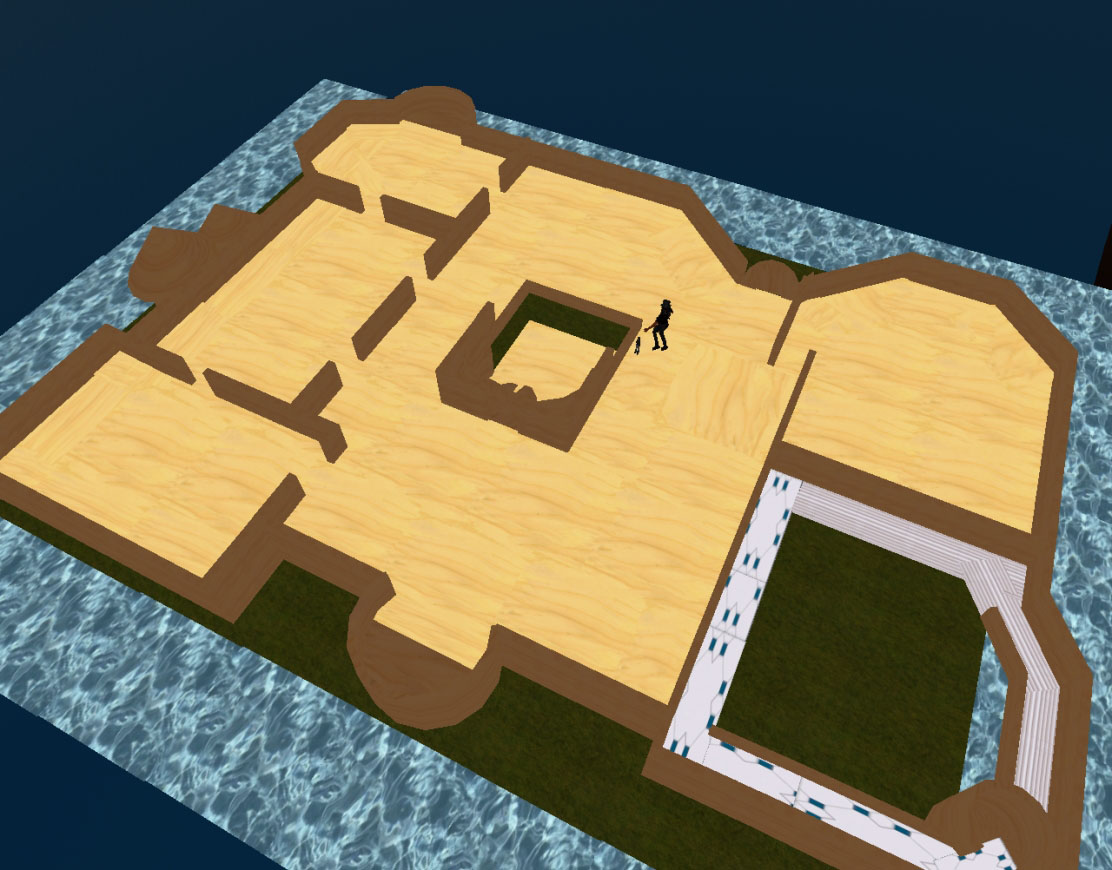
Figure 1. Floor Plan Just After Import from SketchUp
Classroom preparation for the pilot project began in month five, when students learned what was expected of them and received standards for evaluating their experiences. This sort of orientation helped prevent the problems encountered by other researchers who had used Second Life with groups of inexperienced students.7 At the same time, several educator-actors volunteered to play the parts of Madeline and Roderick. Joe Essid often stepped in to provide special effects and props during the simulation or to portray the Usher family doctor.
As in other forms of live theater, we arranged for understudies for the roles of Roderick and Madeline 'for each visiting time the students selected. The actors then discussed how best to portray the story in live narrative within a virtual space.
Three weeks later, the first students entered the house and participated in a live 90-minute role-play, guided at times by the educator-actors nudging them back to Poe's storyline. Each student received an individual task to complete while in the house, such as "find what you can about the family doctor," as well as a beta-test task, such as "evaluate the architectural details and recommend improvements." In addition, students were tasked with interacting with each other and with staff actors while remaining in character.
After all of the students had experienced the house, each was asked to make notes based on the evaluation standards and give feedback, knowing that their work would improve the experience for two more classes the following year. We received advice both on the environment and the structures. These fell into a few categories, paraphrased here and perhaps inspired by prior experiences with quest-based online games:
- Make the Usher crypt more confusing
- Add additional interactive props
- Add secret passages8
While the time spent on preparation may seem excessive, we believe the investment was worth it; the resulting simulation can be reused indefinitely for simulations or tours (we reused Usher for two years before moving it to a new platform). Because Second Life hosts a large community of users, a simulation can also become an interuniversity project.
Student Responses to the Mood of the Simulation
Poe does not give precise details for the house, beyond a few architectural features and notations of "many dark and intricate passages," making an impression on the narrator of a structure full of "a pestilent and mystic vapor, dull, sluggish, faintly discernible, and leaden-hued."9 With that sort of gloomy latitude, we allowed our — and our students' — imaginations free play during this segment of the build. Some aspects of the house, such as the dimly luminescent passages of the crypt, were easy to replicate in Second Life because lighting is ambient and does not require a source to prevent total darkness. Through careful uses of dark and dreary textures elsewhere, we captured an environment that the students described in blog posts as "oppressive," "depressing," "morbid," and even "scary." Some responses offered specific advice to deepen the role-playing experience:
"If the walls had pictures of [Roderick and Madeline's mother] and maybe even had [one] right over the [Roderick's] bed, it would be much more convincing that his mother was haunting him. Also more old boxes would contribute to their insanity [Roderick and Madeline's] if they were lying around and when you opened them the items inside were junk that may or may not give clues to the avatars as ways to get Madeline out of the house or trick Roderick to go outside."
Other respondents began to make connections beyond Poe's story to the context of Victorian culture, a goal we had set for this experience:
"I tried to explore the house for clues explaining the cause of Roderick and Madeline's madness. When in the sitting area I found an entry from Roderick's journal from October 31, 1847. Oddly enough[,] the entry was written the same day as Samhain, a pagan holiday during which time dead ancestors visited living loved ones."
The same writer located a poem of Poe's beside a skeleton in the family crypt. She spent a great deal of time hunting for clues in the poem itself, in addition to focusing on why poetry had been jammed into an exhumed rib cage. She suggested a change to help explorers reach the very conclusion the designers had intended: that Roderick had an unnatural obsession with his mother, composing poetry to her and leaving his work beside her unearthed bones:
"Figuring out how the poem ended up by the skeleton might be more valuable th[a]n trying to decode its meaning. The house did not offer enough evidence or clues to explain the presence of the poem[,] so I assumed Roderick put it there himself. If that was the case, then his madness might be [at]tributed to the shock of seeing a skeleton in his own house and not having the sanity to remove it…. The House of Usher was the first time I experienced a beneficial educational simulation in Second Life."10
Some students, accustomed to disembodied social networking and other forms of communication, felt the dynamic shift when interacting with an avatar. One respondent described her experience watching Madeline and the other characters:
"[Although] separated by thousands and thousands of miles[,] this woman was interacting with our class as if she was in the room. A strange and eerie sensation came from this realization. Here she was, an avatar, moving, talking, acting, as if she was truly Madeline."11
What the team learned along the way from these students and the experience of building will contribute to future projects using immersive literary builds. We note our lessons here in order to assist others who interested in recreating the experiment in their own virtual worlds.
Lessons Learned: Collaboration
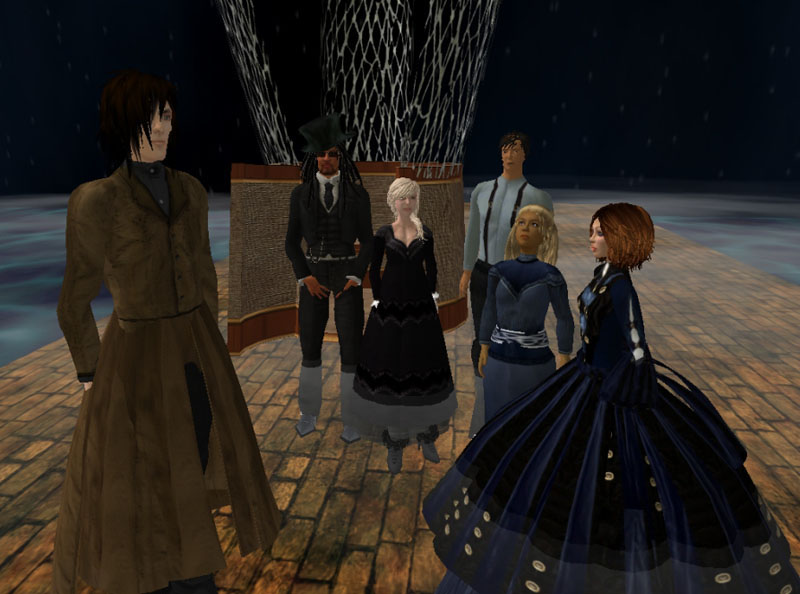
Figure 2. Usher Cast and Students Gather in the Fog
Technologists and educators partnering on such projects should heed the following tips. Indeed, the most difficult part of the collaboration on Usher was not the building process but planning for effective use of the built 3D space.
Stay Flexible
As noted, student input played an important role in shaping the house after the first beta test. Any virtual structure must be able to be reshaped later; it cannot be a "turnkey product" provided by a master architect who gets paid and then leaves the scene.
Test on a Small Scale Before Committing to a Technology
A student builder made the floor plan with Google SketchUp and several stunning bits like the crypt entrance and the banisters for two balustrades that look down into the Usher's library and great hall. Most of these parts were imported from SketchUp and then converted into a structure that uses prims, the building blocks of any Second Life object.
The university's team made a crucial mistake at this point, not realizing that private islands in Second Life allowed shapes larger than 10 meters in any direction. Instead we felt bound by the smaller object-sizes that Linden Lab mandates in other parts of Second Life. Had we consulted an expert builder earlier, we could have avoided a time-consuming rebuilding later to improve performance for the simulation — at the same time that we were buying or making props, recruiting actors (calling in many favors), and preparing clues and special effects. That was a painful lesson.
Know Students' Technological Preferences
In the beta-test semester, we all learned by doing. We quickly discovered that many students' laptops could not easily manage the graphical requirements for Usher, even though other parts of Second Life had worked well before. We even found it difficult to get students to use AC adapters, something that helps a laptop's processor work faster, because on the Richmond campus students demand that class applications run on their laptops over wireless.
Although students did not give negative evaluations of Usher in their blogs or course evaluations, the designers recognized that the slow load times on many student computers hampered immersion. In the second semester, we had all the students use our lab instead of their laptops. In some cases, students had decided on their own to move into a computer lab where Second Life was available on faster desktop computers.
Use an Experienced Builder or Learn to Build Before You Begin
While the student builder — with no Second Life experience prior to Usher — did admirable work, the faculty member should have done more early on, or we should have hired an experienced builder. The teamwork provided good experience for the student, but a result was the inability to export the entire build when done.
In a future build with multiple builders, we'll be certain to task parts of a project to an individual who can then make backup files and give them to the master builder for archiving or importing into other worlds. (Figure 3 shows a faculty member in the role of the evil family doctor, with examining room props that were both made and purchased.) Ideally, the permissions system in virtual worlds would be modified for those of us using a Creative Commons framework. We want to respect the rights of those who buy and sell in virtual worlds, yet for academic builders profit is rarely an issue, while archiving is crucial and often required for grants.
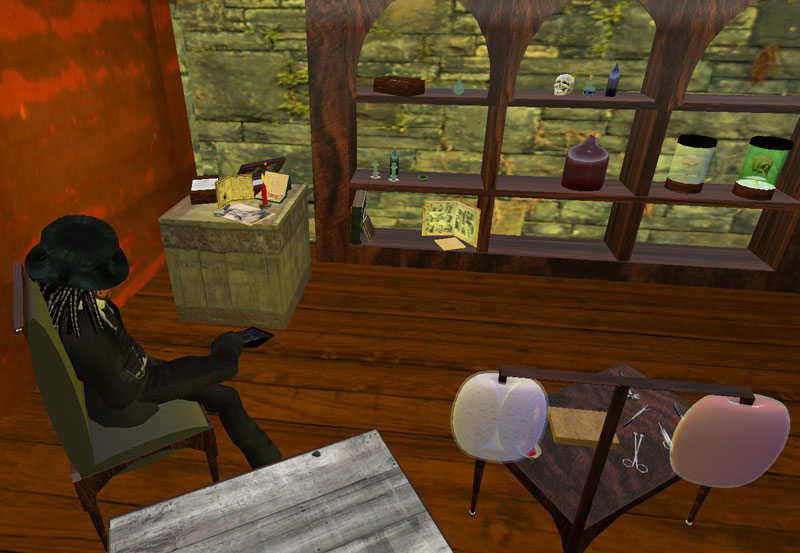
Figure 3. Doctor's Examining Room, with Props Made and Purchased
Faculty-student teams may rightly balk at hiring out builds. Learning to build establishes a local skill set for other projects if university participants assist. That said, it really helps to have a skilled primary builder do most of the heavy lifting and, at every stage, have a design consultant provide advice.
In some respects, we might as well have purchased a pre-made but modifiable Victorian mansion and adapted it to our needs. We considered this option early on, but decided to focus on building key aspects of Poe's fictional house: the copper-clad, luminous walls of the family crypt; the cluttered music room; the secret passages alluded to in the story.
Bottom Line for Builders
If a faculty member or student has a knack for building in virtual worlds, the project team should:
- Learn the terms of service for permissible sizes of user-created content
- Reduce the number of scripted objects
- Hire a scripter and a design consultant to save time and anguish
- Constantly assess performance on student computers
- Determine a platform's strengths and weaknesses before collaboration begins
For us, that might have been summed up as "know your rights." A multifaceted team worked on Usher, including students who started the project but were not available for future work due to graduation. In several cases throughout the process, items built for the project had to be transferred from one owner to another with the proper building permissions checked in order to become usable. Second Life and, in many cases, OpenSim environments both have permissions settings on many objects that allow for content rights management.
However, in a situation where multiple builders collaborate on a single object, rights-management settings need to allow full sharing from the beginning, to avoid problems later. Even when Usher content had the right permissions setting, only the original creator could save it for later transition to OpenSim from Second Life. When taken together, these collaboration issues forced hours of "redo" work, which slowed initial progress. The team's hard-learned awareness of the need for proper rights management, distributing tasks among several lead builders, and use of a master-builder avatar to control permissions will set the tone for future building projects.
Immersion for Collaborative Role-Play
For collaborative role-play, immersion is crucial. Immersion deepens when the environment becomes a character in its own right. This means thinking about a lot of things, from creating a space that loads quickly on computers so people can move through it comfortably to making the space vivid, tactile, and interesting, with great texture work, scripted objects, motion, and lots of things to discover (see Figures 4 and 5). Some of these immersive aids will end up affecting role-play (and that's a good thing!), so bear that in mind. A few items that help with immersion:
- Period clothing — Dress avatars in clothing from the era to help the group and each player get into character (because what you see enhances realism). The act of putting on a costume is an event distinctly attached to "changing" your character.
- Props — Embed interactive items as well as discovery items for the actors. Things that can be toyed with for effect (a rocking horse, a skeleton) add to the experience and provide a clue to the narrative. For Usher, these items were purchased as often as they were manufactured. We were not proceeding under a grant requirement to provide copies of all deliverables, so this did not pose a problem.
- Ambient sound and motion — Sound and motion can do a lot to create a living space instead of a diorama. That said, too much sound or too many movements will distract and detract.
- Orientation for participants — We found that an hour-long orientation per student group sufficed, and we were pleased at the relatively smooth way all teams adapted to the unfamiliar setting online. We may have thus avoided problems identified in Jarmon's and Keskitalo's studies of communications and engineering students. In fact, Keskitalo's team of researchers found that without orientation, their engineering students did not benefit from the immersive setting in Second Life.12
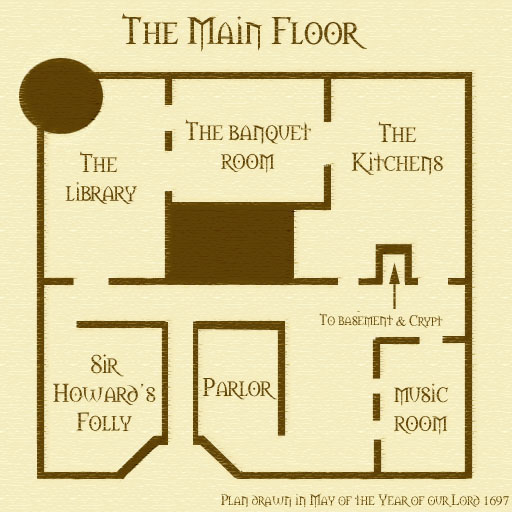
Figure 4. A Clue in the Usher's Library
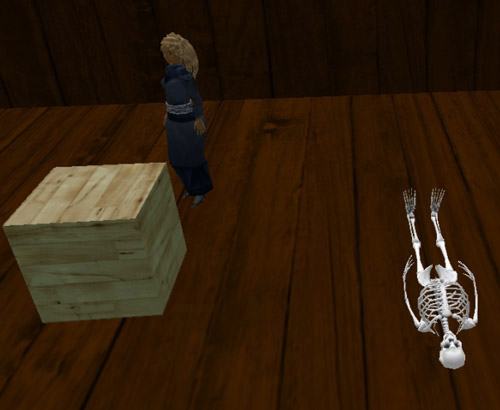
Figure 5. A Student's Avatar Finds Something Unexpected in the Attic
The designers could not have been happier when a student gave this feedback: "Not only did I feel engaged, but I felt as if I had a role in this story. I was no longer a passive reader, but an active actor within the story."13
Questions for Future Research
Because of its intentions to test technology and not measure learning outcomes, the project described here made no attempt to set up a control group or to gather quantitative data. We would like to know:
- To what degree did students use Poe's text during the simulation to solve the mystery they confronted?
- To what degree did they reread the text before returning — as many did — for a follow-up "clue hunt" without the two Usher avatars present?
- How did students feel about the activity, in terms of literary concepts learned, as compared to earlier work with and without virtual worlds?
This would have been an ideal opportunity to compare the experiences of learners in the immersive 3D and traditional environments. To get beyond the quantitative, if positive, responses we collected from learners, future researchers should do a comparative study.
Future (Open) Simulations: Looking Beyond Second Life
For future work with immersive literary simulations, we decided on OpenSim, not Second Life, for building new simulations. Despite having Second Life's relatively high land-use costs covered by the university, OpenSim's expansion over the past year merits close attention.
Moreover, the ill-timed decision by Linden Lab to end educational discounts for renting server space has pushed many educators to consider moving part or all of their teaching and research to OpenSim grids. The Usher simulation described returned to the designers' inventories when the university sponsoring the project closed its virtual island.
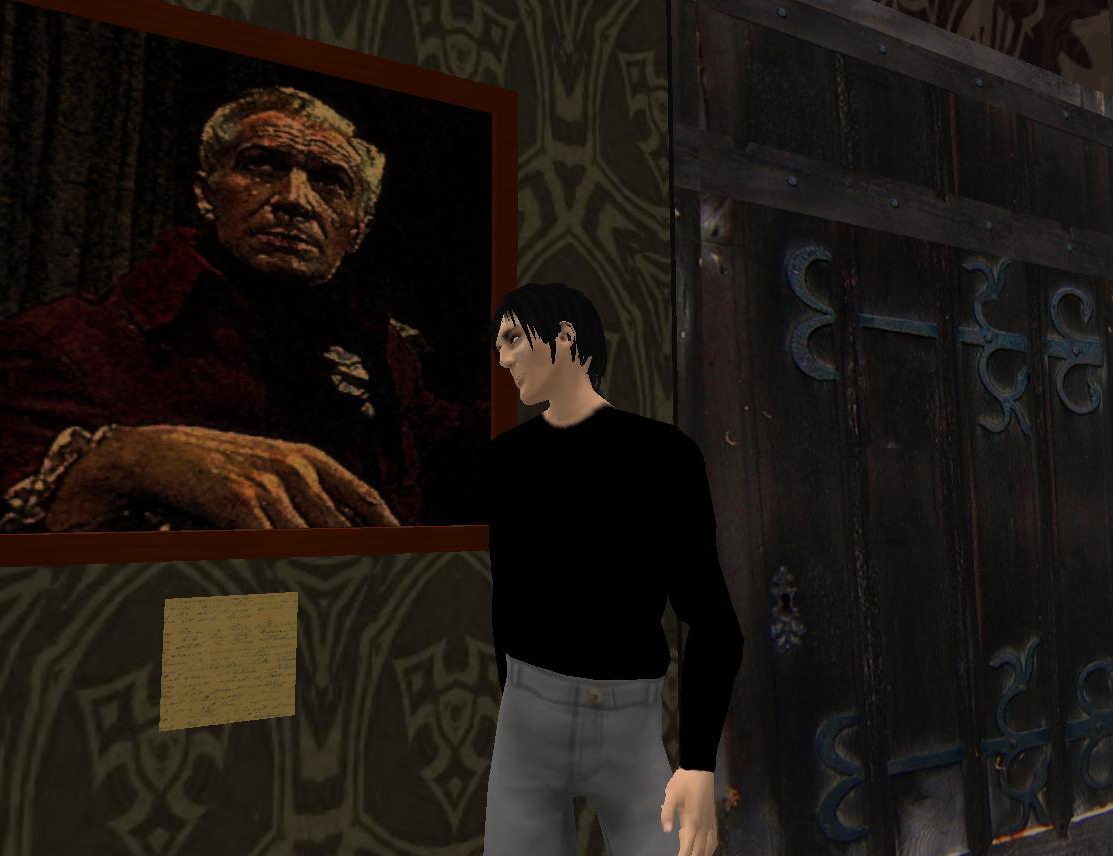
Figure 6. Roderick Usher in OpenSim, as the House of Usher Rises Again
At the time of writing, a new version of Usher is rising on Jokaydia Grid, an OpenSim grid dedicated to education. "Nevermore," an entire region in the education-focused virtual world Jokaydia Grid, will be dedicated to Poe's ideas; references to Poe's poetry and other fiction, such as The Narrative of Arthur Gordon Pym, will be woven into the immersive simulation of Usher.
Benefits of the OpenSim Setting
Usher's new home provides lower-cost virtual land and other benefits over Second Life. Notably, the use of a broader, more flexible set of tools, including large shapes for building, is possible anywhere, not merely on private islands.
OpenSim grids also offer off-world file backup; the restrictive IP practices in Second Life discourage saving offline and make backups of educational regions particularly difficult for copyright-protection reasons. On the other hand, with OpenSim technology entire creations made by multiple builders can be moved from grid to grid, something impossible in Second Life without violating Linden Lab's terms of service. The Creative Commons and gift-economy approaches common in academia are better supported by OpenSim, though we advise that those who embark on future projects ensure they are not working with stolen materials.
A Small World Can Be Good
We detect fundamental differences in concerns between social users of virtual worlds and educators. Educators may be better served by hosting their own content locally on an instance of OpenSim or finding a grid with good support for education, something that has waned palpably in Second Life during the time of this writing.
Creators of commercial virtual worlds are charged with maintaining the broader platform and providing incentives for customers to return; however, designers of smaller simulations for a class need not concern themselves with issues of "churn," or the rate at which users leave a virtual world.14 Churn and lack of uptake seem to have doomed Arden, an ambitious virtual world based on the works of William Shakespeare and headed by noted telecommunications scholar Edward Castronova.15 Our technology needs and overhead (see Figure 7), however, have been far less demanding than Castronova's.
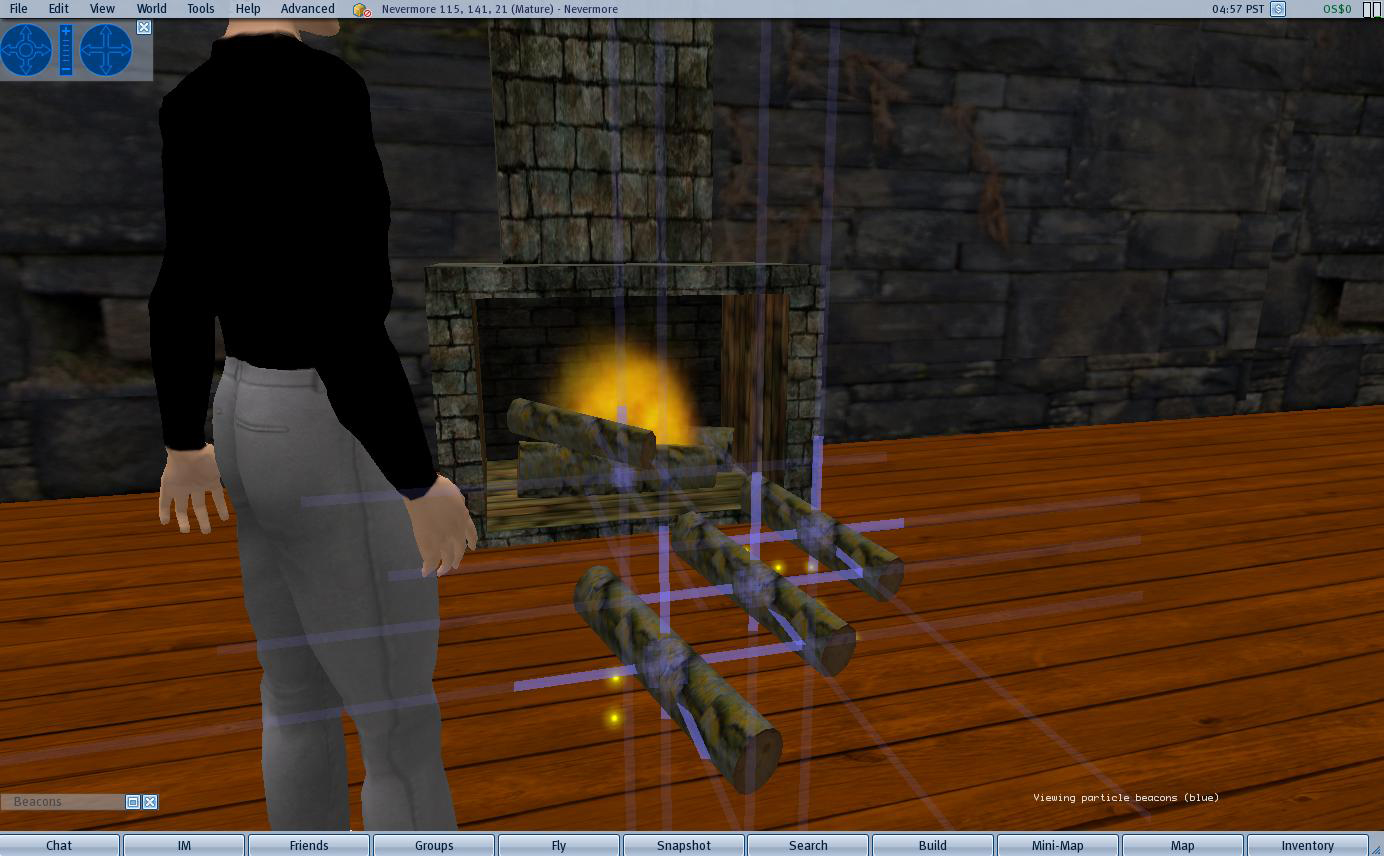
Figure 7. A New Fireplace in OpenSim, with Some Builder's Tools Shown
In our experience, most students do not return to a virtual world after a course ends, even when they enjoy a simulation and give the class and instructor positive evaluations. Our retention rate for students in Second Life, after the classes have ended, has been about 2% for 100 undergraduates in four courses. While in class, however, students get an important opportunity to explore virtuality's options for masks, personification, and agency within an actualized structural representation of a literary work.
Lastly, although the population of OpenSim grids is smaller than that of Second Life, the grids hosted by private firms and those hosted on campuses are increasingly connected. A relatively new technology called Hypergrid permits avatars and their inventories to travel from any Hypergrid-enabled OpenSim grid to others. This utility will provide more flexibility than the old "walled garden" model of Second Life's isolated grid, run on equipment not owned by universities.
Cautionary Notes About OpenSim
While we favor OpenSim technology for our purposes, teams considering collaborating in OpenSim grids should realize that, unlike Second Life, OpenSim is very much in beta. In the past year, however, great improvements to several grids have allowed stability to rise to a level comparable to Second Life in 2007. We expect those improvements to continue, especially as more OpenSimn grids deploy web-based clients to ease the hardware requirements for students.
We found that unless a project runs well on a student laptop and with a wireless connection, the project may as well not exist. After experiencing repeated crashes, several students leveled harsh criticisms at Second Life and an OpenSim grid used the semester of the Usher beta test. A web-based client will make their experiences smoother and, by extension, more immersive.
No matter which type of simulation is ultimately the best, it remains vital to prepare students and faculty for their experience and give them time to experiment with their avatars and environments so that they are not distracted from the narrative when the time comes to act.
Conclusions
We contend that for the House of Usher simulation, the presence of Roderick and Madeline plus other "friends of the family," all with varying motives and histories, construe a virtual world within the larger one of Second Life. This world-within-world makes Usher different from other literary builds we have encountered and more akin to the best role-playing areas within Second Life.
Meanwhile, behind the scenes, the team that built the simulation could congratulate themselves as they witnessed the benefits and impacts of immersive simulations, as noted by James Paul Gee:
Human societies get better through history at building technologies that more closely capture some of what the human mind can do and getting these technologies to do mental work publicly. Writing, digital computers, and networks each allow us to externalize some functions of the mind.
Though they are not commonly thought of in these terms, video games are a new technology in this same line. They are a new tool with which to think about the mind and through which we can externalize some of its functions...what I would call "action-and-goal-directed preparations for, and simulations of, embodied experience."16
A student who acted in the second semester summed up the lessons of her embodied experience as an actor inside a literary work she was also reading as follows:
- "My continued/furthered development in understanding the story through the visual experience.
- "Greater opportunity to explore/understand interesting details that are mentioned within the story (specific portraits, books, music, etc.) and their significance by actively asking/discussing them with Roderick, Madeline, [and other actors].
- "Emotional activation/involvement through real visual/aural stimulants such as ghosts, apparitions, screams, gunshots, illogical ramblings of Roderick.
- "Illuminated importance in recalling small, important details of the story that may help the actors solve a problem/mystery such as opening the door to the crypt."17
Leveraging this sort of reading and writing becomes especially powerful when inviting students inside a literary work and, as in games, collaborative exploration and writing allows them to help shape and reshape that work as their understanding grows. For those designing the simulation, they needed to point no further than such narrative responses when conducting assessment. For the experiment described, student engagement justified the time and effort involved. It remains to be seen, and was indeed outside the scope of the Usher project, to compare knowledge of Poe's work and its cultural milieu among readers who simply read the text and those who read it while using the simulation.
This sort of research should be undertaken as virtual worlds emerge as a viable and stable technology for learning. As further simulations evolve to test ideas about immersive learning, new collaborative ventures between faculty, technologists, and students become not only possible but also essential.
Acknowledgments
The authors wish to extend special thanks to the following individuals who made The House of Usher come to life: Lee Carleton, whose Rhetoric and Communication Studies (RHCS) 295 classes used the Usher simulation; Joe Essid's English 103 students, who beta tested it; Kevin Creamer, Jon Messer, and Fred Hagemeister of the University of Richmond Center for Teaching, Learning, and Technology (CTLT) for their support and coordination during the build; Sonya Anani of the CTLT, who helped build the house; and volunteer actors Margaret Czart of the University of Illinois at Chicago, Michael Galvin of George Mason University, and Suzie Medders of Clemson University, who brought Poe's characters to life.
- Wagner James Au, "Simulating Success: SL-to-RL Border Guard Training Simulation Improves Test Scores By 28%," New World Notes blog, September 1, 2008.
- Tuulikki Keskitalo, Elli Pyykko?, and Heli Ruokamo, "Exploring the Meaningful Learning of Students in Second Life," Educational Technology & Society, vol. 14, no. 1 (2011), pp. 16–26. A qualitative study of literacy learning merits attention, but it differs from ours in that it assesses learning of primary school students; see also Guy Merchant, "3D Virtual Worlds as Environments for Literacy Learning," Educational Research, vol. 52, no. 2 (2010), pp. 135–150.
- Richard A. Bartle, Designing Virtual Worlds (Berkeley: New Riders, 2004), p. 55.
- Eetu Mäkelä, Sampo Koistinen, Mikko Siukola, and Sanni Turunen, "Immersion," section 4.2.6 of "The Process Model of Role-Playing."
- Debbie Jeffers, e-mail to the authors, June 28, 2010.
- For the purposes of this article, we distinguish "simulation" from "immersion" differently than do some game theorists. We consider immersion to occur when a participant in a simulation becomes engaged enough to lose track of time, to "get into character," and to want to continue "playing" after the time allotted ends. Pohjola contended that "immersion is inspired and natural, simulation is conscious and forced." Our simulation would be a setting for role-play where, we hoped, immersion and creative collaboration would take place. As Pearce illustrated, researchers have found that three-dimensional virtual simulations, especially those with freedom of movement, enhance the sense of immersion through interaction with simulations: "Reflecting on the introduction of avatars to games and virtual worlds, researchers have pointed out that participants gain a customizable identity, and a body awareness. Suddenly they could run, jump, and physically interact with the world.... All players enjoyed a new sense of inhabitation and agency." For further reading on this topic, see Mike Pohjola, "Autonomous Identities: Immersion as a Tool for Exploring, Empowering and Emancipating Identities" in Beyond Role and Play: Tools, Toys, and Theory for Harnessing the Imagination, Markus Montola and Jaakko Stenros, eds.,\ (Helsinki: Ropecon, 2004), pp. 81–96, p.82; and Celia Pearce, "Communities of Play: The Social Construction of Identity in Persistent Online Game Worlds" in Second Person, Pat Harrigan and Noah Wardripp-Fruin, eds. (Cambridge: MIT Press, 2007), p. 312.
- Keskitalo, Pyykko?, and Ruokamo, "Exploring the Meaningful Learning of Students in Second Life."
- Anonymous responses to beta-tester survey, English 103 class, fall 2009.
- Edgar Allan Poe, The Fall of the House of Usher, Project Gutenberg, pp. 7–8.
- Anonymous responses to beta-tester survey, Eng. 103 class, Fall 2009.
- Anonymous responses to class survey, RHCS 295 class, spring 2010.
- Keskitalo, Pyykko?, and Ruokamo, "Exploring the Meaningful Learning of Students in Second Life," and Leslie Jarmon, Tomoko Traphagan, Michael Mayrath, and Avani Trivedi, "Virtual World Teaching, Experiential Learning, and Assessment: An Interdisciplinary Communication Course in Second Life," Computers & Education, vol. 53 (2009), pp. 169–182.
- Anonymous responses to class survey, RHCS 295 class, spring 2010.
- Bartle, Designing Virtual Worlds, p. 224.
- Erica Naone, "Virtual Labor Lost," Technology Review, December 5, 2007.
- James Paul Gee, Good Video Games + Good Learning: Collected Essays on Video Games, Learning and Literacy (New York: Peter Lang, 2007), p.23.
- Anonymous responses to class survey, RHCS 295 class, spring 2010.
Glossary of Terms Used
- asynchronous/synchronous — not occurring simultaneously/occurring simultaneously. In terms of virtual simulations, visitors might engage the space as a group (synchronously) or alone, at various times over the course of days or weeks (asynchronously). Accommodations must be made for both types of visitors.
- beta test — phase in the software development cycle most often related to user experience and usability.
- grid — a form of distributed computing. In the case of virtual worlds and simulations, "grid" is used to describe the commonality of a particular set of computing resources, such as the Second Life grid, an OpenSim grid, or a stand-alone or private grid.
- interactive objects — objects within a space (virtual or real) that are designed to react to a visitor's touch, proximity, voice, or behavior. In virtual simulations, interactive objects can simultaneously be a part of the setting and specialized information repositories.
- OpenSim (opensimulator) — the software for, and common name of, open-source grids, both private and public, that provide virtual simulation space for developers and visitors.
- prim — the basic building block of the user-generated content spaces in OpenSim and Second Life. A prim (from "primitive") is a single 3D object that can take shapes including a cube, a sphere, and a cone; it can be edited to change color, texture, and geometric parameters; it can be combined with other prims to form the complex objects that make up a virtual world — from cars to clothing. Prims can be programmed as interactive objects.
- permissions system — the content management tools for a grid using user-generated content. The permissions system controls who may edit, copy, purchase, and delete particular prims, as well as whole constructs.
- Second Life (SL) — a proprietary grid providing 3D simulation space featuring user-generated content; operated by Linden Labs since June 2003.
- user-generated content — in virtual simulation spaces like OpenSim and Second Life, the ease with which content is built using prims means that most of the spaces are constructed not by employees of the grids but by users who develop their own content and then share it (through sales or gifts) with other users.
- virtual simulation — a computer-based space or form that allows a visitor to "step inside" an experience. Examples include flight training simulations, driving simulations, and educational computer games that re-create historical events.
- virtual world — a collection of virtual simulation spaces, together with a community of users, that persists over an extended period of time. Other definitions of "virtual world" exist, but this one strikes us as particularly apt, because we like the idea of "space"+ "community" over "time" as an equation. Second Life and OpenSim grids add user-generated content to this equation as a given; not all worlds do.
© 2011 Joseph J. Essid and Fran Wilde. The text of this EQ article is licensed under the Creative Commons Attribution-Noncommercial-No Derivative Works 3.0 license.

